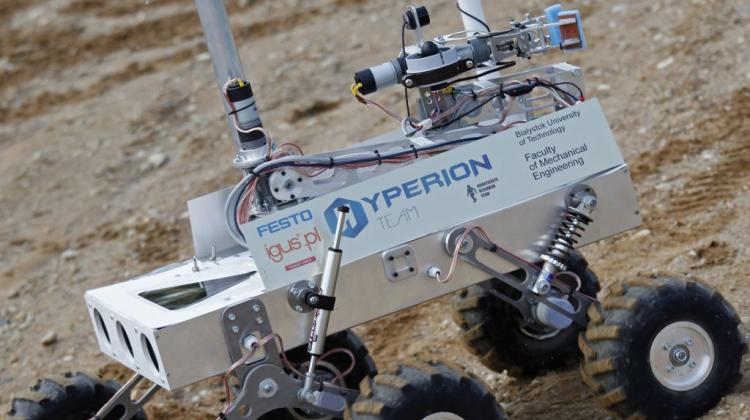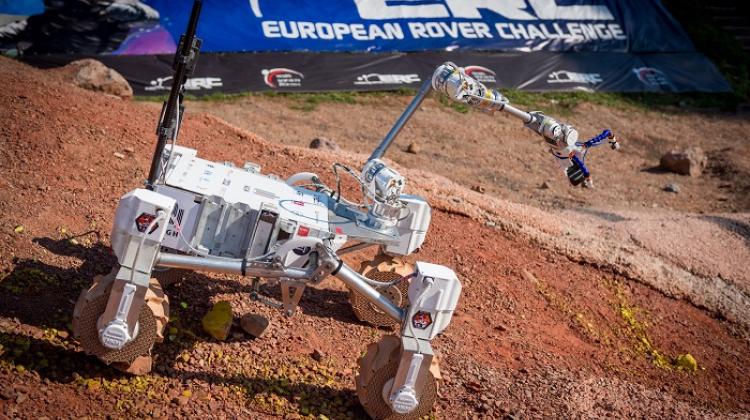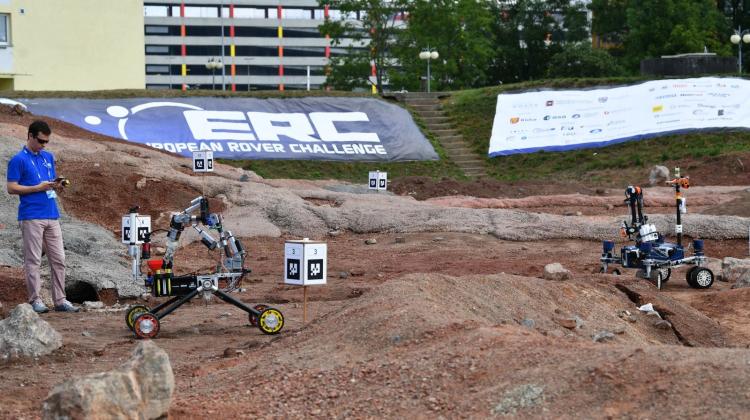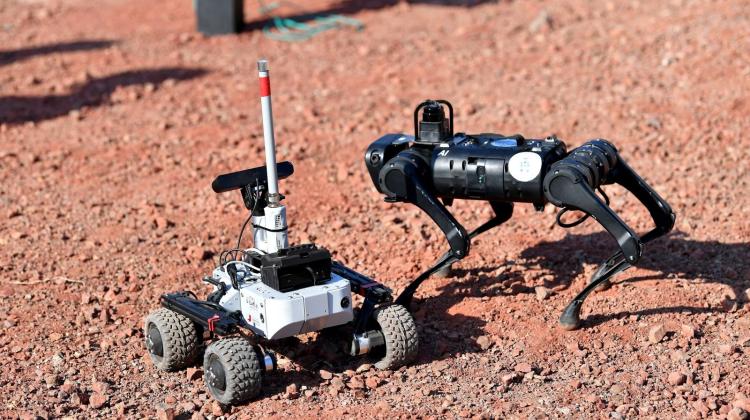Polish Mars rovers went to the U.S.

Rovers built by students from Białystok, Wrocław and Rzeszów have been transported to the United States. Their constructors will join more than a week later to participate in the competition in the Utah desert. Before departure, the rovers were presented in the capital.
In late May and early June, Polish Mars rovers will take part in prestigious competition University Rover Challenge in the Utah desert, in conditions similar to Mars.
This year, 14 teams from the U.S., Canada, Poland and India have signed up for the competition. "The teams will compete in five competitions, including the terrain ride, sampling, engineering panel operation and support for an astronaut" - said Robert Lubański of the Mars Society Polska at a press conference at the Copernicus Science Centre.
Teams have between 30 and 60 minutes to complete each field task. Operators control rovers from special tents that block the view of the area where the competition takes place. The control is based only on the image transmitted from the rover\'s cameras and data received from its deck. Landscape resembles that of Mars. Conditions - though still on Earth - are also difficult, for both humans and robots: temperature reaching 40 °C, burning sun, frequent winds and dust.
Poland will be represented by three teams. SKNL Rover Team of Rzeszów University of Technology has built the Legendary Rover - device moving on six wheels, with independent suspension and electric power source. It is equipped with two interchangeable keypads for different tasks, it also has four cargo platform for astronauts. Vision system, GPS, and reliable communications module allow smooth and precise vehicle operation in the difficult desert terrain.
Another vehicle, Scorpio III, has been built at Wrocław University of Technology. "Each of the six wheels is driven by a separate motor. The structure is based on an aluminium frame, which should endure well the hardships of the desert competition" - emphasized Łukasz Leśniak, Wrocław University of Technology student and one of the designers of the machine. The rover is doing very well in the field thanks to its joint design that enables it to turn better and climb high obstacles. Another improvement are very lightweight grid design wheels. One pair of wheels, however, is made of soft and durable material (Cordura), filled with powdery granules. This prevents transferring vibrations to rest of the structure even while riding on a very uneven surface.
The third rover in the competition will by the Hyperion built by the team from Białystok University of Technology. This vehicle has six independently driven and controlled wheels, articulated manipulator, GPS and vision system. It is adjusted to move in the desert, sandy and rocky terrain, and can climb even elevations inclined at an angle of 50 degrees. In the desert competition it will "search" for life forms, perform engineering tasks and provide assistance to injured astronauts. One of the designers, Michał Grześ, argued at the press conference that the rover is manageable and fast. Its speed reaches 20 km per hour.
Poles have competed in the challenge before. In 2010, the third place was taken by the rover Magma, joint effort of students from the Nicolaus Copernicus University in Toruń and Białystok University of Technology. One year later, Białystok University of Technology students won he competition with Magma 2. Young engineers from Wrocław took the 4th place, and students from Toruń - the 6th place.
PAP - Science and Scholarship in Poland
zan/ krf/ jbr/ mrt/
tr. RL
Przed dodaniem komentarza prosimy o zapoznanie z Regulaminem forum serwisu Nauka w Polsce.


















